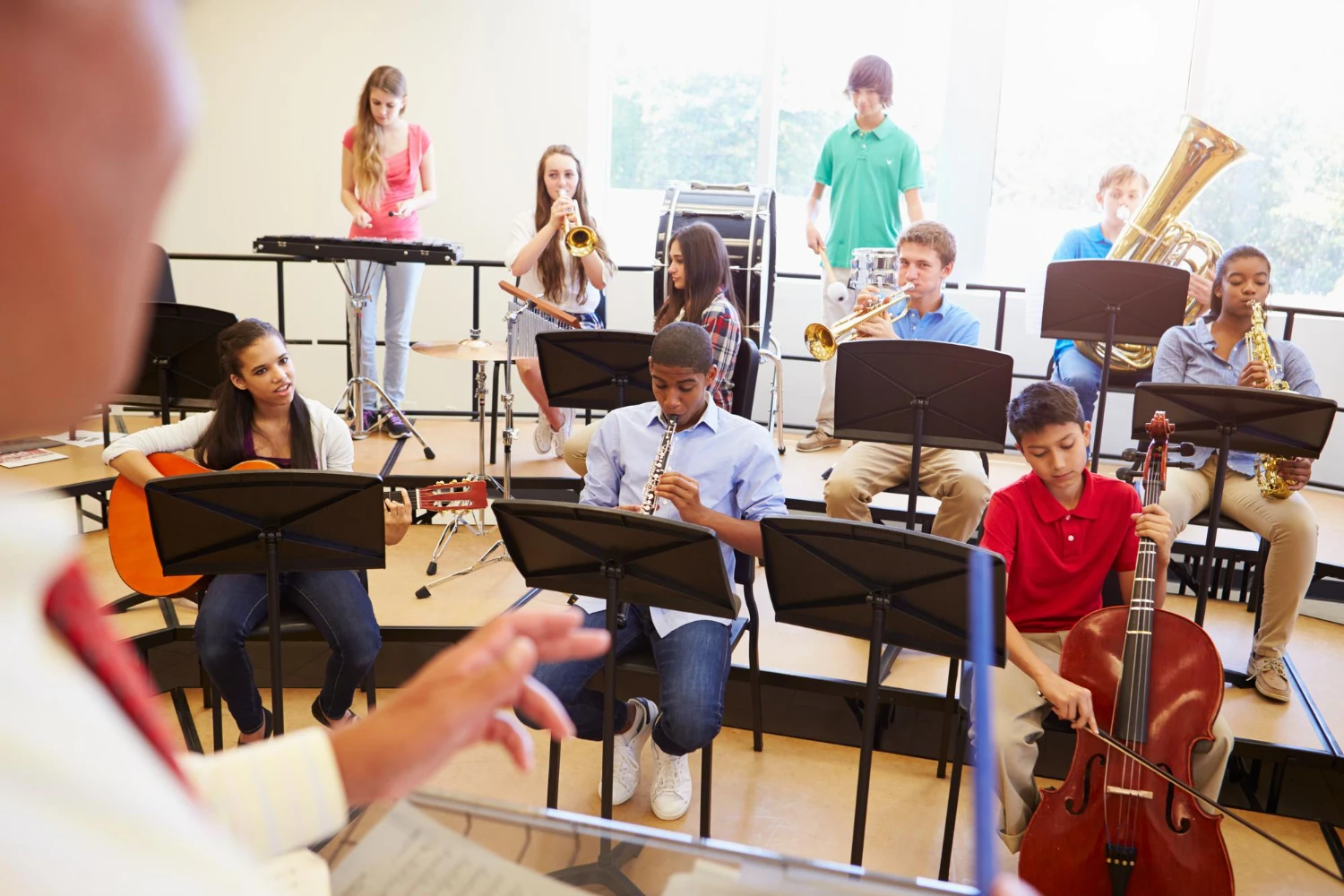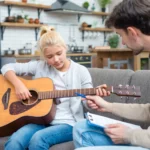
Why Instruments Belong In The Classroom
A rich curriculum of instruments opens up a world of opportunity for students. Whether they’re picking up a violin for the first time, experimenting with electronic music production, or performing in an ensemble, learning an instrument teaches more than just notes.
Key benefits of instrumental learning in secondary schools include:
- Improved fine motor skills and coordination
- Discipline through regular practice routines
- Listening and collaboration in ensemble settings
- Creative expression and emotional regulation
- Enhanced memory and concentration
Embedding instrumental study into the Key Stage 3 and Key Stage 4 music curriculum ensures that students from all backgrounds have access to these benefits—not just those who can afford private tuition.
Brain Benefits: Music and Cognitive Development (Ages 11–16)
Between the ages of 11 and 16, students experience a critical period of brain development. During this time, music education can play a powerful role in supporting cognitive, social, and emotional growth.
Scientific studies have shown that regular music engagement:
- Stimulates both hemispheres of the brain, enhancing problem-solving and analytical thinking
- Increases neuroplasticity, helping the brain adapt and learn more efficiently
- Boosts verbal memory, reading comprehension, and even mathematical ability
- Reduces stress and supports mental wellbeing—vital during adolescence
- Fosters empathy, discipline, and a sense of belonging
It’s no surprise that students who engage in sustained music learning often perform better across other subjects too.
Designing a High-Impact Music Curriculum
As a freelance music education consultant, I work with schools to develop inclusive, ambitious, and engaging music curricula. When it comes to instruments, we look at:
- Curriculum sequencing that introduces and builds instrumental skills over time
- Balancing practical music-making with knowledge of theory, genres, and composers
- Integrating technology to support modern music-making and accessibility
- Supporting teachers with resources, CPD, and practical strategies to teach instruments confidently—even when they’re not specialists in every one
Practical Models for Instrumental Learning
Schools can embed instrumental learning in various ways, including:
- Whole-class ensemble teaching in Year 7 or 8 (e.g. strings, brass, ukulele)
- Carousel models where students rotate between instruments and skills
- Smaller group tuition embedded into curriculum time
- Cross-curricular projects combining composition, performance, and digital music
Each model offers opportunities for students to engage with music in hands-on, meaningful ways.
Long-Term Benefits of a Music-Rich Education
Investing in a strong secondary school music curriculum isn’t just about music for music’s sake—it’s about preparing young people to thrive in a complex world. Music supports:
- Academic success through improved cognitive and literacy skills
- Cultural awareness and appreciation for diversity
- Social connection through shared performance and collaboration
- Personal growth via resilience, creativity, and self-expression
Let’s Shape Something Powerful Together
Whether you’re reviewing your Key Stage 3 music provision, looking to enrich instrumental learning, or want to explore how music can support broader school goals, I can help.
I offer:
- Curriculum design tailored to your school’s context
- CPD for teachers on teaching instruments and developing inclusive practice
- Practical resources to embed music and instrumental education into your department
Get in touch to begin a conversation about what’s possible in your school.



Leave a Reply